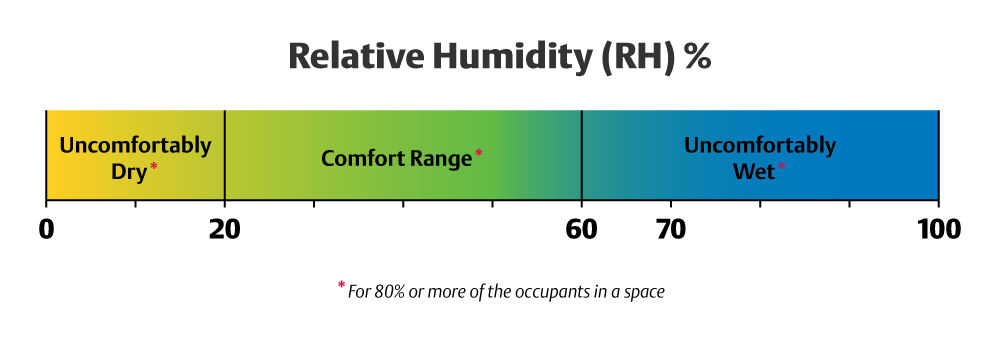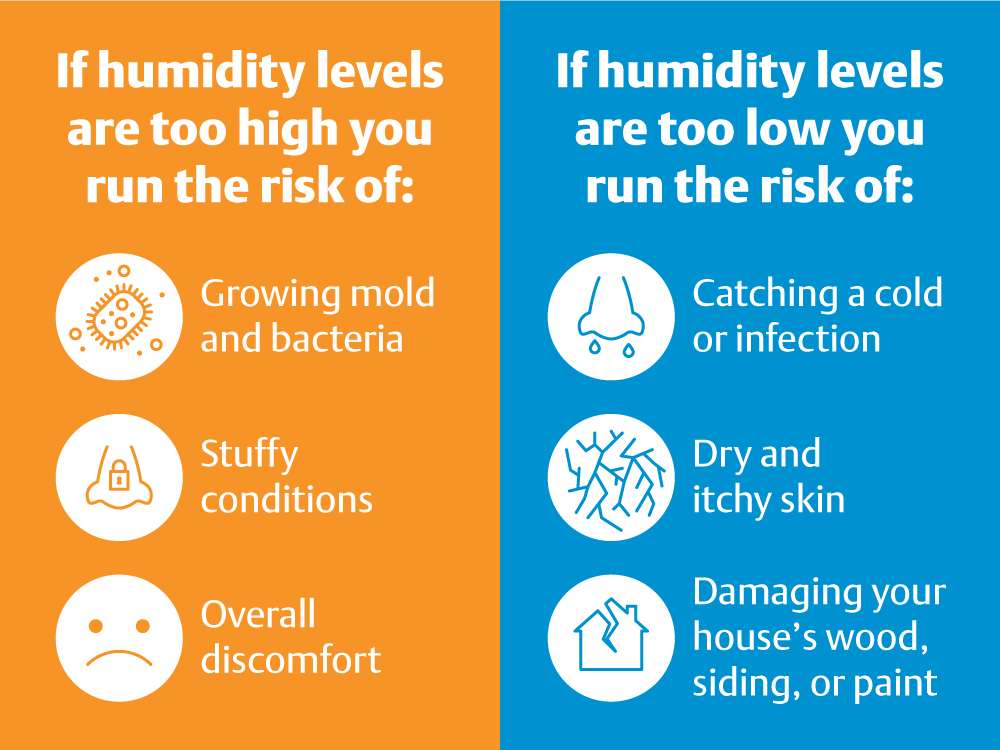Understanding Relative Humidity in the Home

Humidity simply refers to the amount of moisture in the air. Breaking down the math, relative humidity is the percentage of water vapor that’s in the air at a certain temperature. When the relative humidity is at 30 percent, for example, the air is holding 30 percent of the moisture it’s capable of containing.
During colder months, the air’s ability to hold water decreases, and during warmer months, it increases. The ideal relative humidity level for the inside of your home is between 30 and 50 percent. This is important because the level of humidity in your home can impact your overall health and comfort and potentially affect the cost of heating or cooling your home.
If humidity levels are too high you run the risk of:
- Growing mold and bacteria
- Stuffy conditions
- Overall discomfort
If humidity levels are too low you run the risk of:
- Catching a cold or infection
- Dry and itchy skin
- Damaging the wood, paint or siding of your house
Oh, the weather outside is frightful…
Let’s say it’s a cold day in December. The temperature outside is 10° F with 70 percent humidity. Meanwhile, indoors, your thermostat is set to 72° F. When the cold air creeps into your home, your furnace heats it to 72° F, and the air expands. While the moisture in the air remains the same, the relative humidity is significantly reduced. This means that the cold air from outside with 70 percent humidity has an indoor relative humidity of only 6 percent.
The dry air inside your home will steal moisture from wherever it can find it, including your body. As moisture evaporates off your skin, you feel cooler. When you feel cooler, you tend to turn up your thermostat, which can become an expensive habit given the high cost of heating.
Protecting yourself and your wallet
To combat the negative effects of dry air, it’s important to keep your home’s indoor relative humidity level somewhere between 30 and 50 percent. This minimizes the air’s need to replenish moisture and little or no evaporation from your body takes place. As a result, you can actually turn down your thermostat about three degrees and maintain comfort and warmth while saving on energy costs.
There are many different ways to humidify the air in your home. You can use a single room humidifier or install a home humidifier connected directly to your HVAC system. These humidifiers work automatically to ensure the air in your home is at an ideal relative humidity level. It is also recommended to use a more accurate digital thermostat with humidity control to automate the process and keep your system at peak efficiency.
Ask your contractor about humidity in your region and the best way to protect your health and comfort while saving money.




